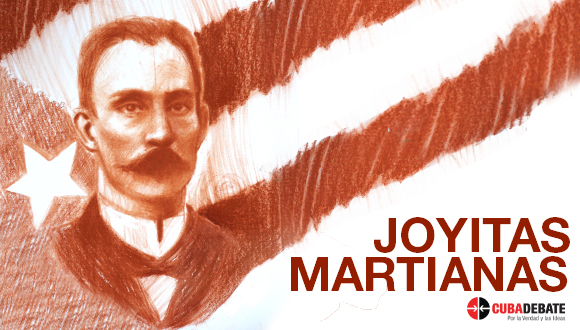"The essential qualities of character, the original and energetic of each man, can be seen from childhood in an act, in an idea, in a look"
("Musicians, Poets and Painters", The Golden Age)
JANUARY 31
On
January 31, 1871,
José Martí arrived in Cádiz.
He had been deported to Spain.
In
1875
the ship in which José Martí was traveling bound for New York made a stopover in Havana, but he did not disembark.
He then continues his trip to Mexico.
In
1876
he wrote a letter to Nicolás Domínguez Cowan.
On that same date, Martí gave a speech at the Academy of Fine Arts in San Carlos, Mexico, in homage to the painter Santiago Rebull.
In
1882
La Opinión Nacional of Caracas published its Constant Section.
Martí comments on the new novel by Émile Zola and also deals with the young poet and novelist Guy de Maupassant.
It also manifests the hostile clamor that Chinese immigrants receive when they arrive in Florida;
and mentions the new artistic and literary movement headed by the aesthetes of England and their young boss Oscar Wilde.
In
1893
, before Cuban émigrés, who gathered at Hardman Hall in New York, José Martí gave a speech.
He points out that he speaks on behalf of the Cubans united for love and the good of the country, who live in insecure and bitter freedom far from Cuba and on behalf of the Cubans on the Island who "have given us their hearts and voices."
It reiterates the task of establishing a lasting and just republic in Cuba and Puerto Rico, and combats the autonomist movement.
In
1895
he wrote letters to General Antonio Maceo, Serafín Sánchez and José Pons y Naranjo.
He refers to his departure to Santo Domingo.
In the letter to José Pons, he details: "Freedom is coming towards us, I see it, I feel it... The blood spilled in 1968 fertilized hearts and gave rise to new characters..."
That same day, Martí left the United States on the Athos steamer for Santo Domingo with the aim of reuniting with Máximo Gómez from there, once the war for independence resumed, to move to Cuba.
